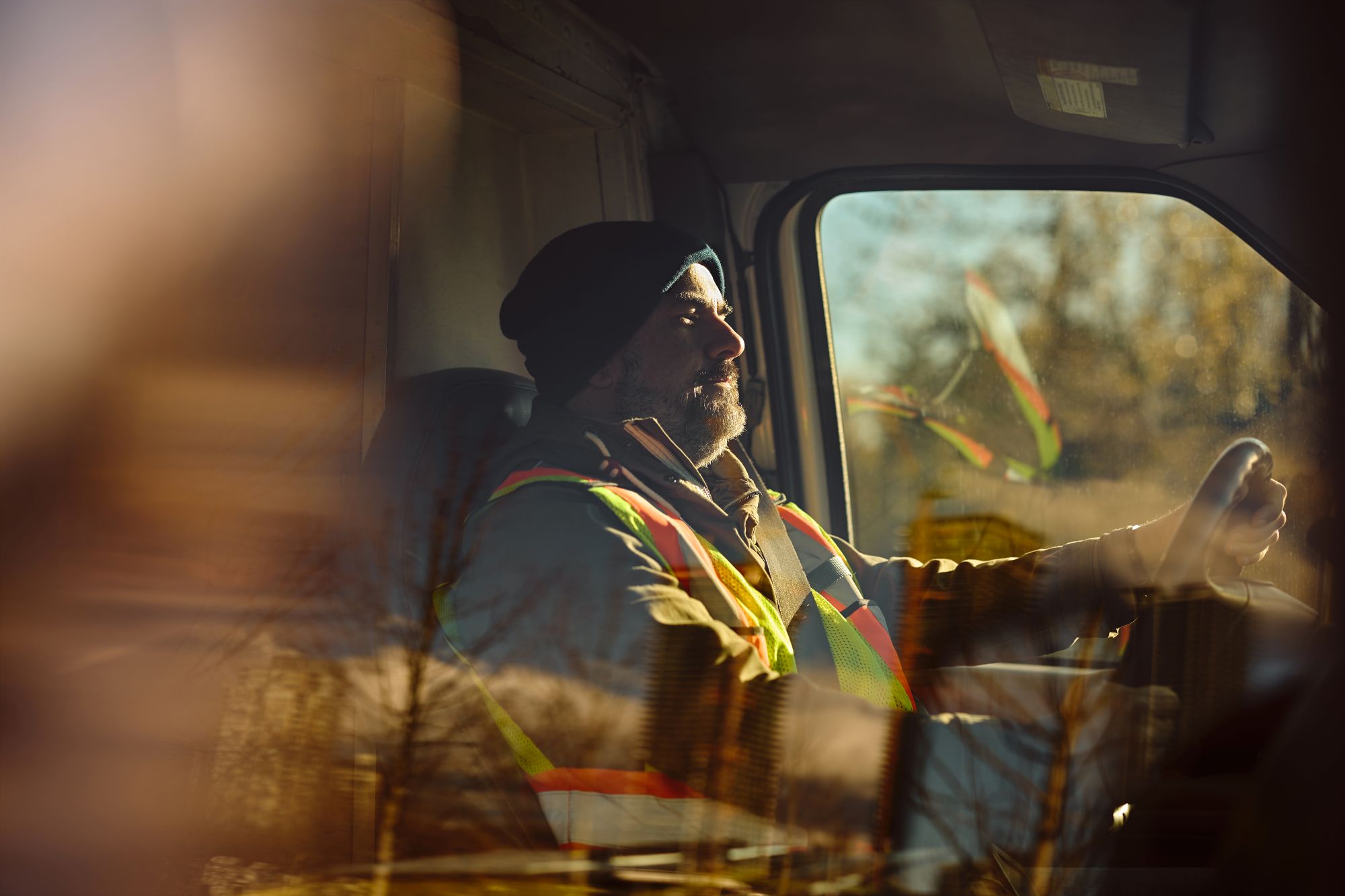
Guest
Romania’s infrastructure boom – What it means for the mobility sector
Created: 22/09/2025
•
Updated: 22/09/2025
Romania is fast emerging as a strategic logistics and freight hub in Southeastern Europe. Supported by billions in EU and national funding, the country’s infrastructure renaissance is attracting fleet operators, logistics investors and manufacturers. In this article, we explore what these developments mean for fleets, drivers and the wider transportation sector.
Romania's transport infrastructure has seen a dramatic shift in pace and scale. The government has earmarked around 25 billion lei (£4.27 billion) for road projects in 2026, reflecting an unprecedented focus on highways and freight corridors.
In mid‑2025, Romania had around 1,325km of highways in service (1,188 km motorways and 138 km expressways), with another 741km under construction and 669km in tendering stages.
By 2030, Romania plans to double its highway network, modernise strategic railway routes, expand urban transport and connect regions that have long been isolated. The challenge is immense, but the outcome could transform the country’s position on Europe’s transport map.
Key projects include the A7 north-south axis running from Ploiești to Siret, which will aid transport to the Ukrainian border, due for completion by 2026. Another is an 11km expressway connecting Satu Mare to Romania’s border with Hungary. The A0 Bucharest Ring Road will ease freight and passenger traffic around the capital, with the southern half already in use. Other major works include the Suceava-Oar and Timișoara-Moravița corridors, as well as the 2.9 km Meseș Tunnel, set to become the longest road tunnel in Romania.
“These corridors won’t just improve east-west and north-south links – they will connect previously isolated regions like Moldavia and the North-East to the rest of the country and the EU,” comments Eduard Ularu, Business Development Manager at SNAP.
But infrastructure isn’t just roads. The Brăila Bridge over the Danube, opened in July 2023 at a cost of €500 million (€363 million co‑funded by the EU), delivers the first crossing over the maritime Danube and significantly improves connectivity to Constanța and Dobruja.
Other vital developments include planned rail upgrades at Constanța port and DP World Romania’s €130 million expansion of container and ro-ro capacity, doubling throughput and adding logistics links by road and rail.
Why it matters
Romania’s freight and logistics market is sizable. Valued at approximately USD 21.11 billion in 2025, it is forecast to rise to USD 24.27 billion by 2030. Meanwhile, the road freight segment alone is projected at USD 9.07 billion in 2025, climbing to USD 10.37 billion by 2030.
These figures reflect Romania’s growing role as a trans-European corridor, serving routes from Hungary, Bulgaria, Ukraine, Moldova and the Black Sea ports. Ukraine now directs much of its grain exports via Constanța on the Black Sea coast, eyeing a doubling from 2 million to 4 million tons per month through Romanian infrastructure.
“These investments will help Romania compete more strongly with major logistics hubs like those in Poland and Greece,” comments Eduard Ularu. “Constanța has huge potential, and with the right infrastructure in place, it can finally become the gateway for European trade it was meant to be.”
Improved warehousing, lower labour costs, and friend‑shoring trends are further encouraging manufacturers and retailers to locate logistics centres in Romania, increasing demand on roads and pushing growth across the network.

Digital developments
The infrastructure upgrades aren’t just physical – they’re digital too. As the country expands its highways and freight corridors, it’s embedding smart systems designed to support faster, safer and more efficient journeys.
Across the network, intelligent traffic monitoring tools are being installed, including weigh-in-motion sensors, inductive traffic loops and roadside cameras. These systems will feed into real-time traffic control centres in cities like Bucharest, Brașov and Timișoara, helping authorities—and fleet operators—respond to incidents and congestion faster.
Bucharest is also upgrading its traffic light infrastructure, using AI and smart detectors to optimise vehicle flows and reduce bottlenecks. This has major implications for freight operators navigating dense urban areas, improving travel time reliability and reducing idling.
At a national level, Romania is shifting towards digital road pricing. The new TollRO system – planned for launch in 2026 – will replace the current e-vignette with a distance-based, emissions-sensitive tolling model, in line with EU directives. This change could encourage cleaner fleets and offer fairer pricing for logistics operators who invest in low-emission vehicles.
For drivers, this means fewer delays, clearer real-time information, and more responsive road conditions. For operators, it’s a chance to futureproof fleet planning, route management and sustainability strategies.
Impacts for fleets and drivers
For fleets and drivers, Romania’s modernisation brings both benefits and trade‑offs. Perhaps most importantly, it’s likely to result in improved network efficiency. With smoother routes and faster corridors, the investments are likely to reduce travel times and idling. Dangerous single-lane national roads will gradually be replaced by safer, faster highways. This will increase productivity and also reduce the time drivers spend behind the wheel.
However, it’s not all positive. Ongoing works on motorways like A7 and A8 may cause delays and route changes while the works are undertaken. It could also mean higher freight volumes (especially at Constanța and border crossings), which may strain existing infrastructure.
“Right now, construction zones like DN2 and parts of the A0 Bucharest Ring Road are causing detours and bottlenecks,” Ularu explains. “Trucks are losing hours on routes that should take minutes – and that impacts everything from fuel budgets to delivery reliability.”
In addition, new corridors, tighter safety rules, and shifting road-use charges require greater compliance attention.
Supporting driver welfare during the transition
Despite infrastructure gains, secure rest parking and welfare facilities remain patchy in some freight corridors, especially near border areas and major hubs. Construction zones often lack formal lay-by zones, leaving drivers exposed and with nowhere to rest.
“We’re still seeing dangerous stopovers and overcrowded lay-bys on key freight routes,” says Eduard. “Modern highways will bring dedicated service and rest areas every 30–50 kilometres, complete with fuel stations, shops, and food courts. For drivers, this means safer places to park, with proper lighting, CCTV surveillance and secure rest zones that reduce the risk of theft. Sanitary facilities such as showers and clean toilets – a rarity on national roads – will finally become the norm.”
SNAP is addressing this gap through its interactive parking map across Romania. Drivers can easily locate trusted, secure truck parking, book spots in advance where available, and plan safer routes via the SNAP map.
Planning a journey through Romania? Use the SNAP map to find secure, driver‑friendly parking along key freight routes.
The sustainability angle
This infrastructure modernisation process also plays a key role in enabling greener logistics. With a better flow of traffic, there will be lower levels of emissions caused by idle vehicles and stop-start driving.
There will also be transport corridor upgrades to support emerging EV and hydrogen refuelling infrastructure, reducing reliance on fossil fuels.
A region on the move
Romania’s infrastructure investment marks a pivotal change for freight and mobility across Southeastern Europe. For fleets, this translates into faster corridors, deeper logistics capacity, and higher volumes of trade but also closer scrutiny of welfare, compliance and resilience.
As a forward-thinking industry leader, SNAP advocates for well-informed operations, flexible route planning, and driver-focused tools that support both safety and efficiency. Romania is not only modernising – it's reshaping how goods move across the region.
“This isn’t just about roads – it’s about resilience, sustainability and building a smarter freight future across Europe. Romania is right at the heart of that shift,” Eduard states.



